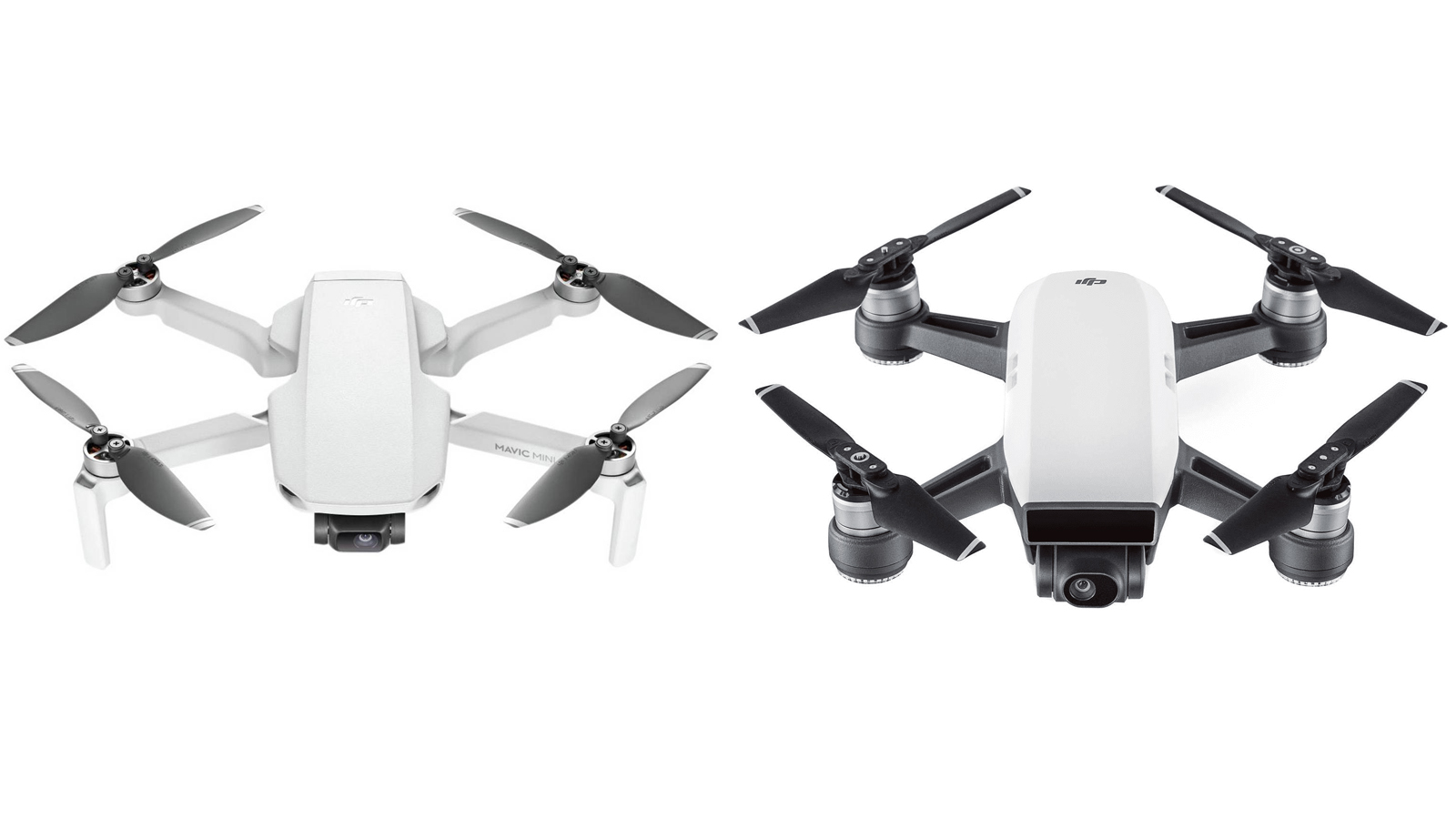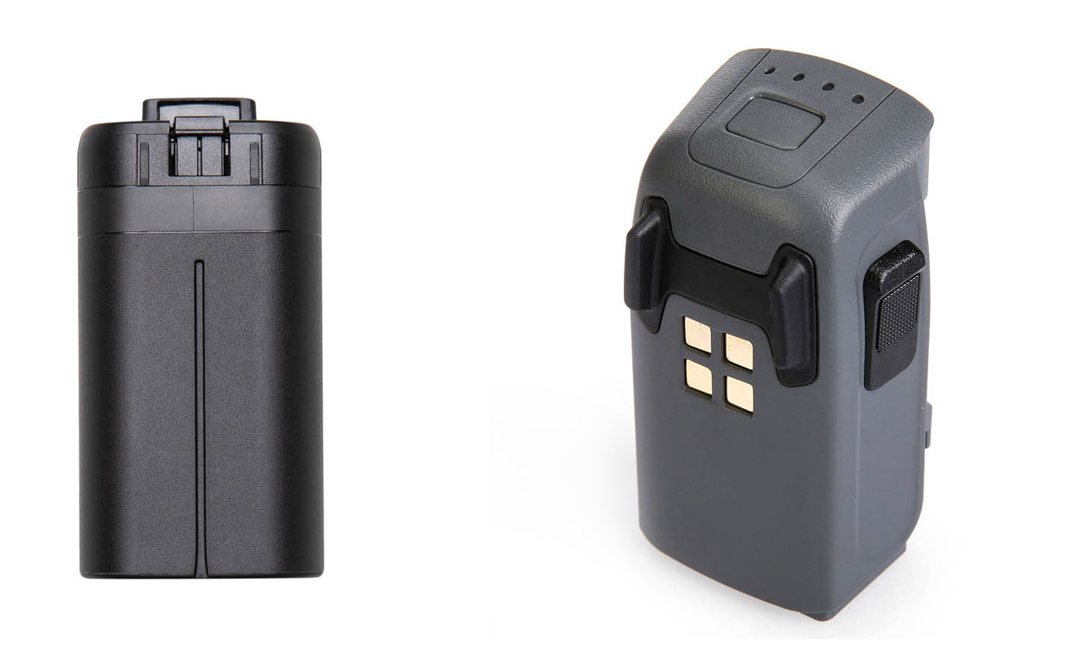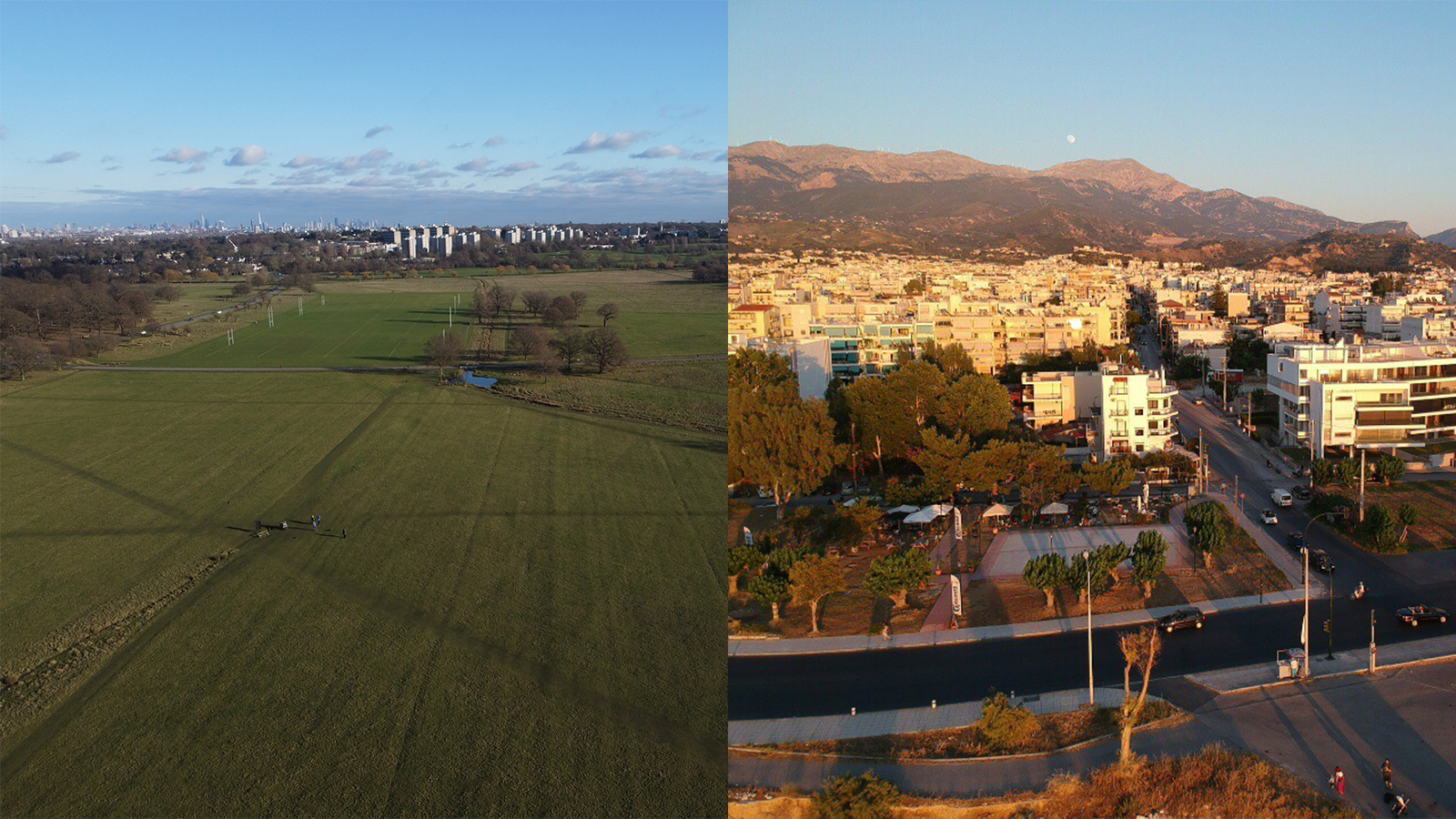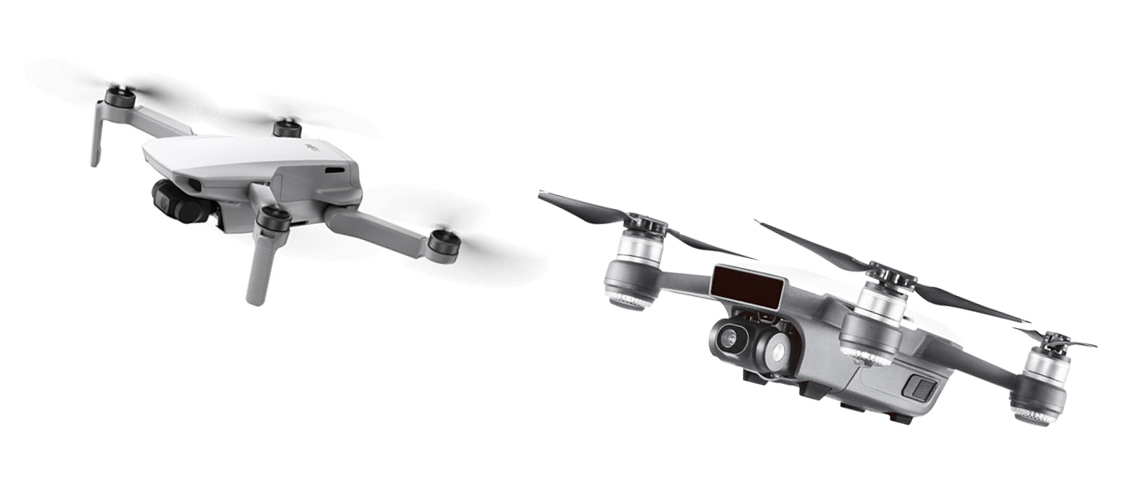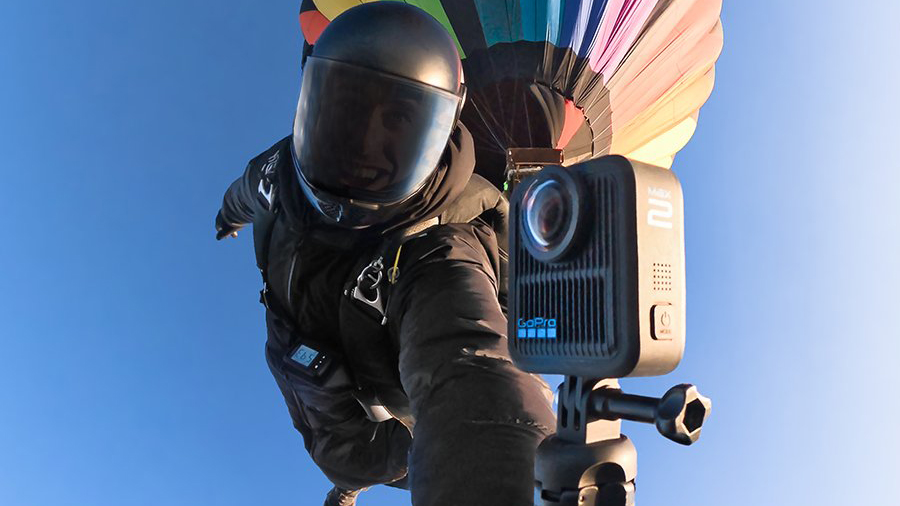Mavic Mini vs Spark: which DJI drone is the best buy?
Which budget-priced DJI drone is best? In our Mavic Mini vs Spark face off we explain all the key differences
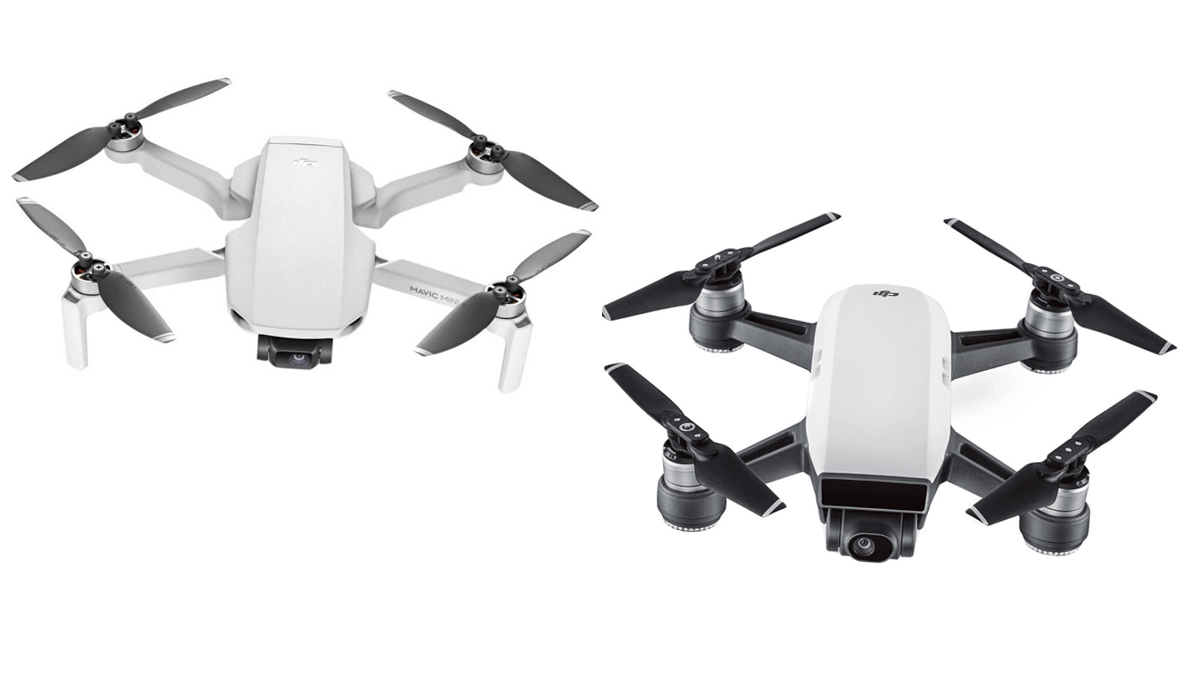
In this DJI Mavic Mini vs Spark comparison guide we help you pick the best option from the two popular low-cost camera drones from market leaders DJI – and help you find the best price.
The DJI Spark and the DJI Mavic Mini drones represent DJI’s two surprisingly different approaches to the consumer market, and which one bests suits you depends more on the tasks you have in mind for it than which was most recently brought to market.
In broad brush terms, the Spark represents an older optimistic time in the growth of the drone market, presenting drones as angelic fun-loving cameras which can hovering around your activities and store the highlights onto storage media. The Mavic Mini seems instead to be a modern drone on a budget, in terms of weight and cash. It has great battery life, and comes with a controller just like a larger drone, but all the features are bare-bones and the weight can be a challenge in the wind.
Time has passed between the launch of the Spark and the Mavic Mini, and not just in terms of the tech; drone regulations have arrived in much of the world which restrict drones to under 250 grams (8.8oz) before the owner is required to sign a register with their local aviation authority (FAA, CAA etc.), meaning that the Mavic Mini’s 249g take-off weight was perhaps the most significant item on its spec sheet.
For a small minority, especially those distrustful of government agencies, that will be reason enough to choose the Mavic Mini (hopefully they won’t rest their tin foil hats on the remote control though). Otherwise please read on to see which really offers what you want.
See also: DJI Mini 2 vs Mavic Mini
Mavic Mini vs Spark: Build & Design
Why you can trust Digital Camera World
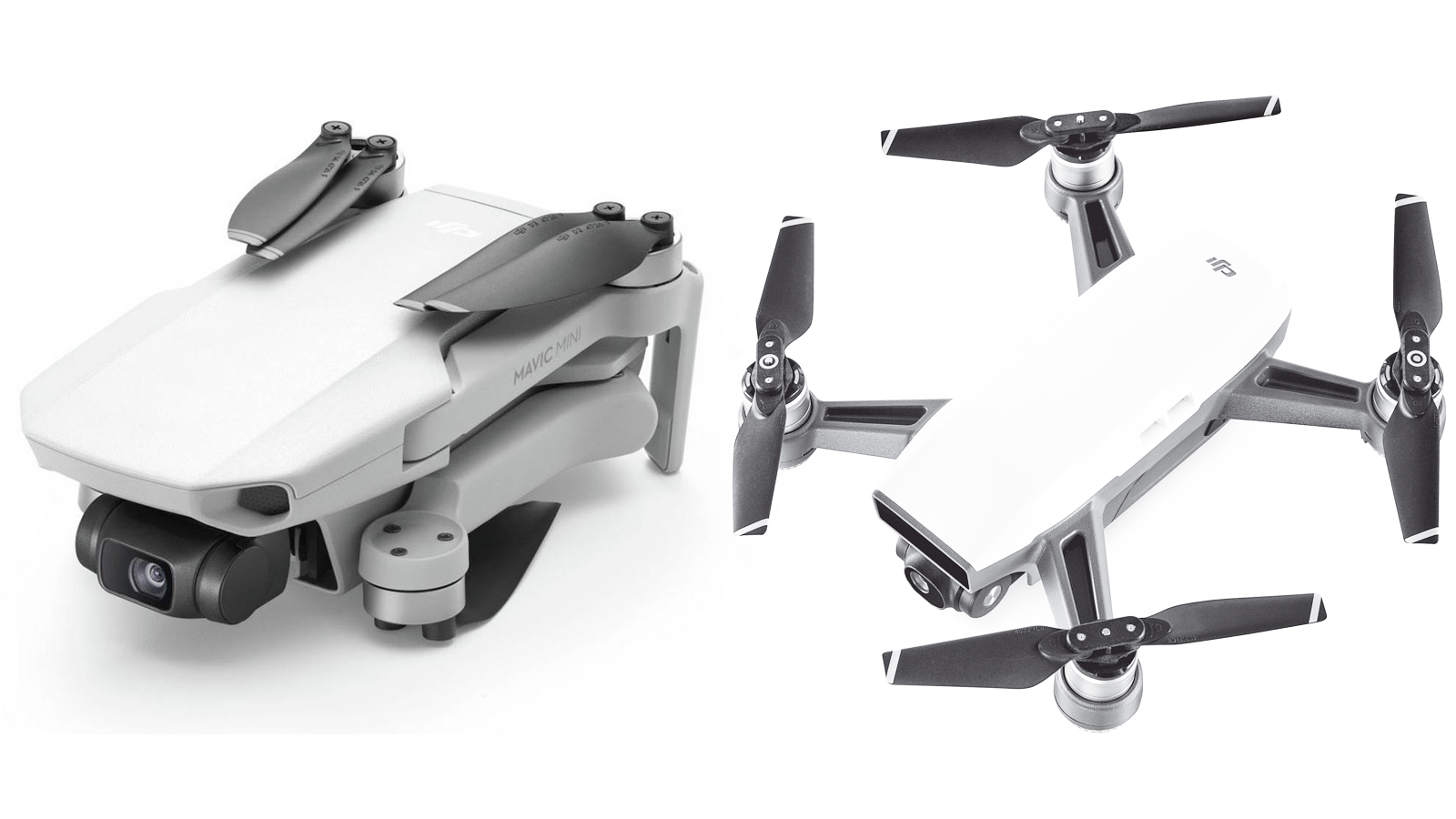
| Row 0 - Cell 0 | DJI Mavic Mini | DJI Spark |
| Take-Off Weight | 249g | 300g |
| Size | 160 x 202 x 55mm | 124 x 143 x 55mm |
| Folded size | 140 x 82 x 57mm | - |
| Diagonal span | 213mm | 170mm |
| Sensors | Downward | Forward + Downward |
The Mavic Mini is well named – it looks and folds like a miniature version of the Mavic Air 2, which looks in turn like a more compact Mavic 2. That’s not a bad thing; they’re all handsome aircraft and (once you get used to the sequence) fold down to a very practical size. The Mini can comfortably travel in a coat pocket, though protective storage is strongly recommended where propellors are concerned, and you’ll also have a remote control to look after. Despite a smaller diagonal span, the Spark might be seen as a bit more chunky because its frame is rigid. The propellors do fold out of the way, but not the arms, which in turn is why they’re so stubby.
The Mavic Mini’s arms do bend a little when opened, a criticism which can’t be leveled at the Spark. That flex, though, doesn’t seem to be a problem – if anything it’s probably a good thing should you suffer a collision. That’s slightly more likely with the Mini, too, since it has no collision detection system save for downward landing sensors. The Spark can do that and “see” up to 5 meters (16ft) forward. With that it can stop flying toward an object rather than hit it, as well as pull off subject tracking. Cheekily the Mavic Mini’s hull has two vents that look a lot like a binocular vision system but, well, they’re not.
Mavic Mini v Spark: Speed & Maneuverability
| Row 0 - Cell 0 | DJI Mavic Mini | DJI Spark |
| Horizontal Speed | 13 m/s | 14 m/s |
| Ascent Speed | 4 m/s | 3 m/s |
| Descent Speed | 3 m/s | 3 m/s |
Both drones are designed to be used near friends and family, so they have an almost friendly presence, and both offer detachable propellor guards for added safety. Neither aircraft, however, are well suited for windy conditions – operating beyond a Gentle Breeze on the Beaufort scale isn’t recommended.
Flight characteristics are broadly similar, since they hail from the same stable. DJI drones default to ‘Mode 2’ control via two sticks (or virtual sticks on your phone screen if you operate the Spark without the radio controller). This is easy to learn, especially as both have GPS/GLONASS positioning sensors and altitude sensors which mean that, should you let go of the controls, the aircraft simply hovers in place.
When its obstacle sensors are on, the Spark drops to around 13mph, but then again photography & videography rarely requires high-speed flight. Indeed most of the best footage you’ll get from the Mini will be in ‘C Mode,’ in which the drone deliberately reduces to a very low speed to capture gorgeous cinematic shots.
Mavic Mini v Spark: Battery life
DJI Mavic Mini Flight time: 30 mins
DJI Spark Flight time: 16 mins
If you’re familiar with DJI’s drones, you’ll know that most are so-called “Intelligent Flight batteries,” with a built-in one-press charge meter (4 LEDs). This is the more visible part of the intelligence; the batteries also monitor how long they’ve been left idle and start to discharge to a safer level after a few days.
The DJI Spark manages all this just as the more professional models do, based around a 3S (3 cell) LiPo which produces 1,480 mAh from its 95g. The battery check button easily reached from the back of the drone when that battery is in place, though the design seems unnecessarily chunky, especially compared to the Mavic Mini. The Mini takes a different tac, opting to use the similar Li-ion technology, improved to the point of producing 2,400mAh in a 2S arrangement. Virtually the entire 100g of this battery pack is devoted to storing charge, and there is no battery meter built in.
On balance, though, the inconvenience of not having self-testing batteries is easily offset by three things: The Mini’s batteries have nearly twice the flight time, there is a tester circuit built into the Mavic Mini airframe so you can easily test the current battery, and the less technically complex design makes spare batteries cheaper. It’s also useful that the Mavic Mini can act as a charger when connected to a USB-C power supply, saving on accessories you need to travel with.
Mavic Mini v Spark: Gimbal
| Row 0 - Cell 0 | DJI Mavic Mini | DJI Spark |
| Axis | 3 (pitch, roll, yaw) | 2 (pitch, roll) |
| Tilt | -90˚ to +20˚ | -85˚ to 0˚ |
The technology which sets camera drones apart from toys is not actually having a camera, but whether the camera is treated with respect. Specifically, is the camera protected from the vibrations and sharp leaning and tilting of the fuselage with a powered gimbal – a device quick enough to compensate for all that unfriendly lurching, and also allowing you to tilt your shot from the horizon down to a more aerial angle at will.
Both the Spark and the Mavic Mini have one, though the Spark’s uses the bare minimum 2-axis method and relies on programming and operator to ensure there are no harsh left or right turns, while the Mini’s 3-axis gimbal compensates for yaw too. The first two axis are by far and away the most significant, but having the third is definitely a win for the mini, and can make video look smoother (especially if the drone is making complicated turns in the shot).
The Mavic Mini also offers a slightly greater range of movement, tilting all the way down to a plan view at 90˚ rather than the Spark’s 85˚. In addition, though it’s limited to zero by default, the Mavic Mini can tilt up to 20˚ up should you choose.
Mavic Mini v Spark: Control Range
DJI Mavic Mini: FCC: 2.5 miles (4000m) / CE: 1.25 miles (2000m)*
DJI Spark: FCC: 1.25 miles (2000m) / CE: 1600 ft (500m)*
The measure of transmission distance isn’t an absolute measure of how far you can fly, but an indication of the strength of the radio signal as it might be in the middle of a flat desert with no wind or any other source of radio interference. The actual limit on your flight is usually the range you can retain visual contact with your drone, or 500m, whichever is the lower. On paper, both drones are perfectly capable of performing within the permitted flying range, though in practice the Mavic Mini is more capable here. Neither should be operated far from the pilot since both use a variant of the Wi-Fi frequency range which is limited compared to high end drone radio systems, and subject to plenty of interference.
The Mavic Mini must be operated with its remote control plugged into your phone as a monitor, while the separate remote is merely optional. Using your phone means you’re dependent on the strength of its Wi-Fi to reach the Spark, which in practice brings your range to a limit of 100m or less (better than your phone at the bottom of the garden, but not much).
One feature only available on Spark is ‘Gimbal Pitch Tracking,’ because it’s only on offer when you are NOT using the optional remote control. With it, the gimbal will tilt the camera up or down to actively match the angle you tilt your phone.
* The maximum quoted range of these drones will depend where in the world you live, due to regional legislation - use the FCC figure for North America, and the CE figure in Europe.
Mavic Mini v Spark: Stills
| Row 0 - Cell 0 | DJI Mavic Mini | DJI Spark |
| Resolution | 4000 x 3000 pixels | 3968 ×2976 |
| Sensor size | 1/2.3-inch | 1/2.3-inch |
| ISO range | 100-3200 | 100-1600 |
| Effective focal length (EFL) | 24mm | 25mm |
In terms of resolution, there is practically nothing to separate these 12-megapixel drones, which also both sport 1 / 2.3-inch imaging sensors – very much in line with the kind you might find in a mid-range mobile phone.
In practice the Mavic Mini seems to benefit from a couple more years refining the processing algorithms at DJI, and seems less susceptible to excess saturation, however neither aircraft capture RAW images so photographers are broadly in the same boat. You can (and may need to) add ND filters to cope with very bright sun, and you should be mindful of the preview you see when composing as any blown highlights will likely stay blown.
To jazz up your photos, the Spark makes use of its depth sensing to offer a still-quite-cool ShallowFocus option (at a social-media friendly 1440x1080 pixels) and stitched panoramas in horizontal and vertical. Burst and Bracketing are also on offer, though only 3 frames with 0.7EV bias.
Mavic Mini v Spark: Video
| Row 0 - Cell 0 | DJI Mavic Mini | DJI Spark |
| Resolution | 2720 x 1530 @ 25/30fps or 1920 x 1080 @ 25/30/50/60fps | 1920 x 1080 @ 30fps |
| Bitrate | 40 Mbps | 24 Mbps |
Professionals will crave 4K or 8K video, but for the kind of use these drones are typically put to higher resolution can bring more problems than it solves. The Mavic Mini’s “2.7K” resolution is a great solution if your videos are mostly shared on YouTube / Instagram etc. – and you’ll comfortably be able to slip a 2.7K shot into a 4K edit without anyone spotting it. The video is sharp and of very pleasing quality, though with a sensor this size obviously you’ll see some noise in low light.
The Spark lags behind, with a limit of “only” 1080P (Full HD) though again this is a perfectly adequate resolution for most purposes). The lower bit rate is a shame, but then there are fewer pixels and the video is actually very pleasing quality. It’s more disappointing, given the focus on fun selfies and action, that no higher frame rate option is available – on the Mavic Mini up to 60fps is available at 1080P which is great for editing to slow mo.
Essentially both drones will give you great looking clips, but the video from the Mavic Mini can sneak its way into a more professional edit (with speed changes and the like) whereas the Spark is more about the moment.
Mavic Mini v Spark: Autonomous Modes
DJI Mavic Mini: QuickShots (Rocket, Dronie, Circle, Helix)
DJI Spark: Palm launch, Palm control, Selfie (make a frame with your hands), Follow, Palm Land, ActiveTrack, QuickShots (Rocket, Dronie, Circle, Helix), TapFly
No self-respecting camera drone will expect acrobatic perfection on the part of their pilot so all drones make varying trade off between sensors, processing power and price to offer pre-programmed effects and subject tracking features. In pure hardware terms, the Spark is the better equipped of the pair, with dedicated object tracking (or avoidance) sensors able to take over at close range.
Both drones offer a selection of ‘Quickshots’ (15-second effects like orbit (Circle) or zooming out on you (Dronie). The Spark also brings what the community has come to know as “Jedi Mode” (or, more boringly, gesture control). In this, simple hand gestures are interpreted as commands to position the drone or take a photo. You need to be a bit robotic in some movements, but it’s easily mastered.
The Spark also boasts ActiveTrack, which follows a subject the drone’s software can identify through the main camera. It’s a great feature, though requires a bit more processing grunt which, presumably, is not available in the lightweight Mini. The Mini does offer Smooth Motion – a slow flight mode for getting cinematic shots which often suffices in terms of getting the shot, but is by no means automatic.
Mavic Mini v Spark: Verdict
Both the Mavic Mini and the DJI Spark are very useful drones, but for slightly different customers. If you’re looking for the better-quality output and, like most, you feel a controller should be part of the package then there is no arguing with the Mavic Mini. Serious vloggers who have friends on hand to capture their footage will not regret the higher video resolution or extended battery time.
The Spark, though, does offer an enticing range of smart features that might make it a better companion on, for example, a family trip. 1080P video offers enough detail for most of us to relive enjoyable moments, Jedi mode is a lot of fun, the automated features feel like great value, and the frame is nicely robust.
The Mavic Mini is slightly hamstrung by DJI’s choice to replace its software with a more sparse phone app, removing useful features like the combined battery meter and return distance warning chart. It’s a minor loss, but still a shame.
The essence is that the Mini has the advantages of being newer, and under the magic 250g, so it seems to make a good comparison with the Spark for many, but if the two had come out at the same time it’d be the lower model. The Spark’s extra features may or may not be offset by video resolution for many creators, making this a distinctly personal choice; but neither is wrong.

The best camera deals, reviews, product advice, and unmissable photography news, direct to your inbox!

With over 20 years of expertise as a tech journalist, Adam brings a wealth of knowledge across a vast number of product categories, including timelapse cameras, home security cameras, NVR cameras, photography books, webcams, 3D printers and 3D scanners, borescopes, radar detectors… and, above all, drones.
Adam is our resident expert on all aspects of camera drones and drone photography, from buying guides on the best choices for aerial photographers of all ability levels to the latest rules and regulations on piloting drones.
He is the author of a number of books including The Complete Guide to Drones, The Smart Smart Home Handbook, 101 Tips for DSLR Video and The Drone Pilot's Handbook.
